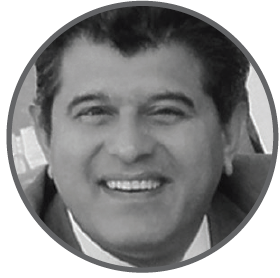
As we move further into summer, the trajectory of the COVID-19 pandemic remains largely unpredictable. In-person meetings have resumed in the United States. We in Europe, however, continue to be tormented by the Delta variant and potentially by another new variant. The Delta variant is much more infectious than other variants because it has a viral load more than 1,000 times that of the original SARS-CoV-2 virus. Unfortunately, the Delta variant can also infect vaccinated individuals (I personally know of two vaccinated people who contracted this variant in the past week). Thankfully, vaccines are helping to prevent severe disease and further mutations, but the spread of the Delta variant must be arrested globally.
In my editorial for the January issue of CRST Europe, I wrote about SARS-CoV-2 and its consequences for innovation. I am glad to observe that technological advances continue to be made in this tumultuous time. Several disruptive technologies, although not necessarily influenced by the pandemic, promise to influence ophthalmic practice and are discussed in this issue. These disruptors are welcome, and I am sure you will enjoy reading about them and wait in anticipation for some to become commercially available.
In my habitual navel-gazing and reflection—this time on the topic of disruptive technologies—it occurred to me that disruptors are not limited to new technologies. Simple measures such as a change in practice can have considerable disruptive and beneficial effects. Switching to immediate sequential bilateral cataract surgery (ISBCS) is a good example. Some surgeons have advocated for ISBCS for many years, and the COVID-19 pandemic has increased the popularity of this approach. ISBCS is increasingly being viewed as acceptable as long as safety principles are followed. For patients, the experience is improved with just a single visit for surgery. For providers, there is a reduction in the duplication of efforts related to admission, preparation, and postoperative follow-up.
Another example of a proposed change in practice is reflected in the recent joint statement by the UK Royal College of Ophthalmologists and College of Optometrists announcing interim recommendations to discharge low-risk patients after routine uncomplicated cataract surgery.1 Per this guidance, patients are not seen by the surgeon for follow-up but are instead encouraged to see their local optometrist for follow-up at 4 weeks. Although 3% to 7% of patients may need postoperative care, which the patient or optometrist can initiate, this protocol potentially frees up a significant amount of resources that can be reallocated toward the many patients awaiting clinic appointments. Many of us, for example, have seen patients with glaucoma who have not been seen since 2019 and have suffered extensive visual field loss from poor IOP control.
With a large backlog of patients, disruptors are ideally treatments and approaches that change practice without compromising patient care. Some disruptors, such as long-acting anti-VEGF implants and tools for at-home glaucoma management, both featured in this issue, are promising. Continuous IOP sensing is highly desirable and, it is to be hoped, will be common practice in the near future.
The area that probably holds the greatest promise is AI and machine learning—technologies that should help with reliable triaging. It is exciting to see some of the developments with Deep Mind and other AI tools. This is certainly a space to watch.
The elephant in the room is the current impact of huge workloads on health care providers. Physician burnout is a serious issue that warrants more frequent discussion. Doctors affected by this syndrome must be well supported at all levels, and attention must be paid to treating and preventing its symptoms. Recently, several peer-reviewed publications addressed the issue, and the results were revealing.2-4
It is no surprise that burnout is a growing issue in our specialty, considering that we ophthalmologists experience not only the pressures of our mounting workloads but also the anxiety that the pandemic has instilled in our communities. I am hopeful that some of the aforementioned disruptors, especially AI, will help mitigate aggravating factors and allow a more sensible, productive, and less stressful professional life for my ophthalmic colleagues.
Here’s to the future of disruptors of all kinds!
Sheraz M. Daya, MD, FACP, FACS,
FRCS(Ed), FRCOphth
Chief Medical Editor
1. The Royal College of Ophthalmologists. Joint statement: interim recommendations to discharge patients following routine uncomplicated cataract surgery. Royal College of Ophthalmologists. June 28, 2021. Accessed July 25, 2021. https://www.rcophth.ac.uk/2021/06/interim-recommendations-uncomplicated-cataract-surgery/
2. Cheung R, Yu B, Iordanous Y, Malvankar-Mehta MS. The prevalence of occupational burnout among ophthalmologists: a systematic review and meta-analysis. Published online August 31, 2020. Psychol Rep. doi: 10.1177/0033294120954135
3. Alotaibi AK, Alsalim A, Alruwaili F, et al. Burnout during ophthalmology residency training: a national survey in Saudi Arabia. Saudi J Ophthalmol. 2019;33(2):130-134.
4. Feng S, Yi JS, Deitz G, et al. Relationships between sleep, activity, and burnout in ophthalmology residents. J Surg Educ. 2021;78(3):1035-1040.


